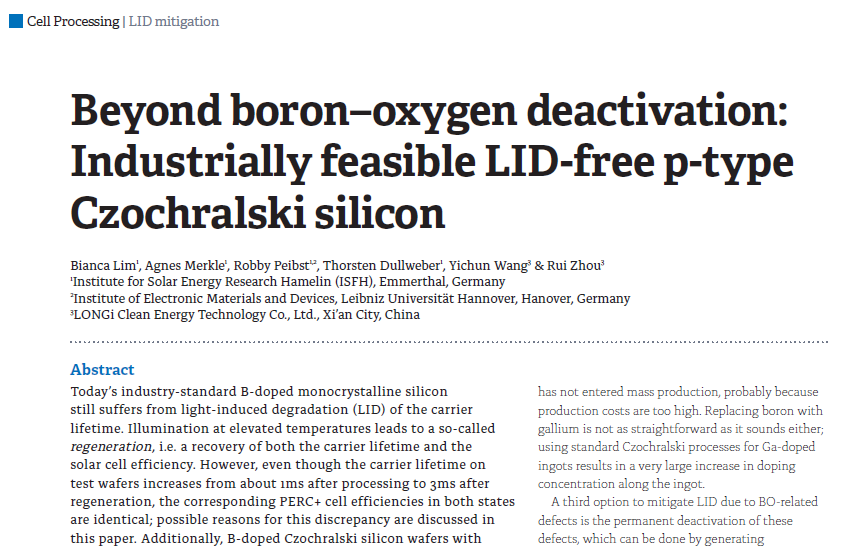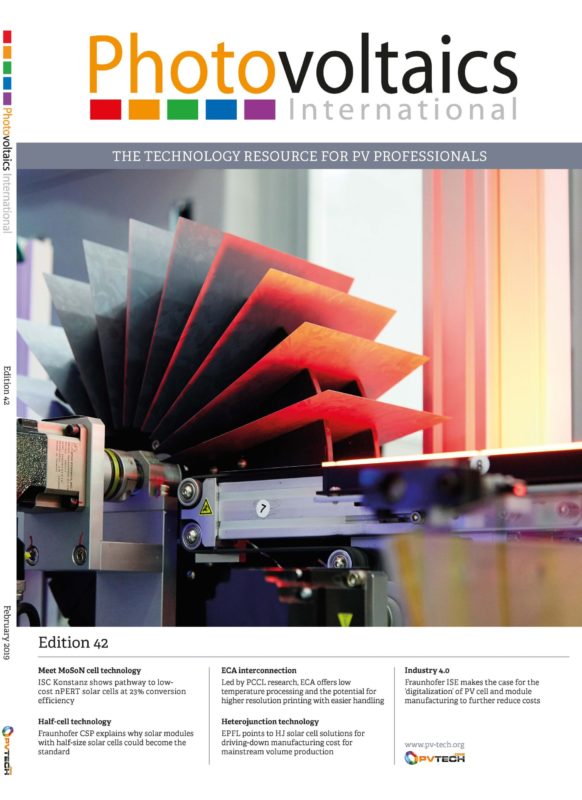By Bianca Lim; Agnes Merkle; Robby Peibst; Thorsten Dullweber; Yichun Wang; Rui Zhou
Today’s industry-standard B-doped monocrystalline silicon still suffers from light-induced degradation (LID) of the carrier lifetime. Illumination at elevated temperatures leads to a so-called regeneration, i.e. a recovery of both the carrier lifetime and the solar cell efficiency. However, even though the carrier lifetime on test wafers increases from about 1ms after processing to 3ms after regeneration, the corresponding PERC+ cell efficiencies in both states are identical; possible reasons for this discrepancy are discussed in this paper.



